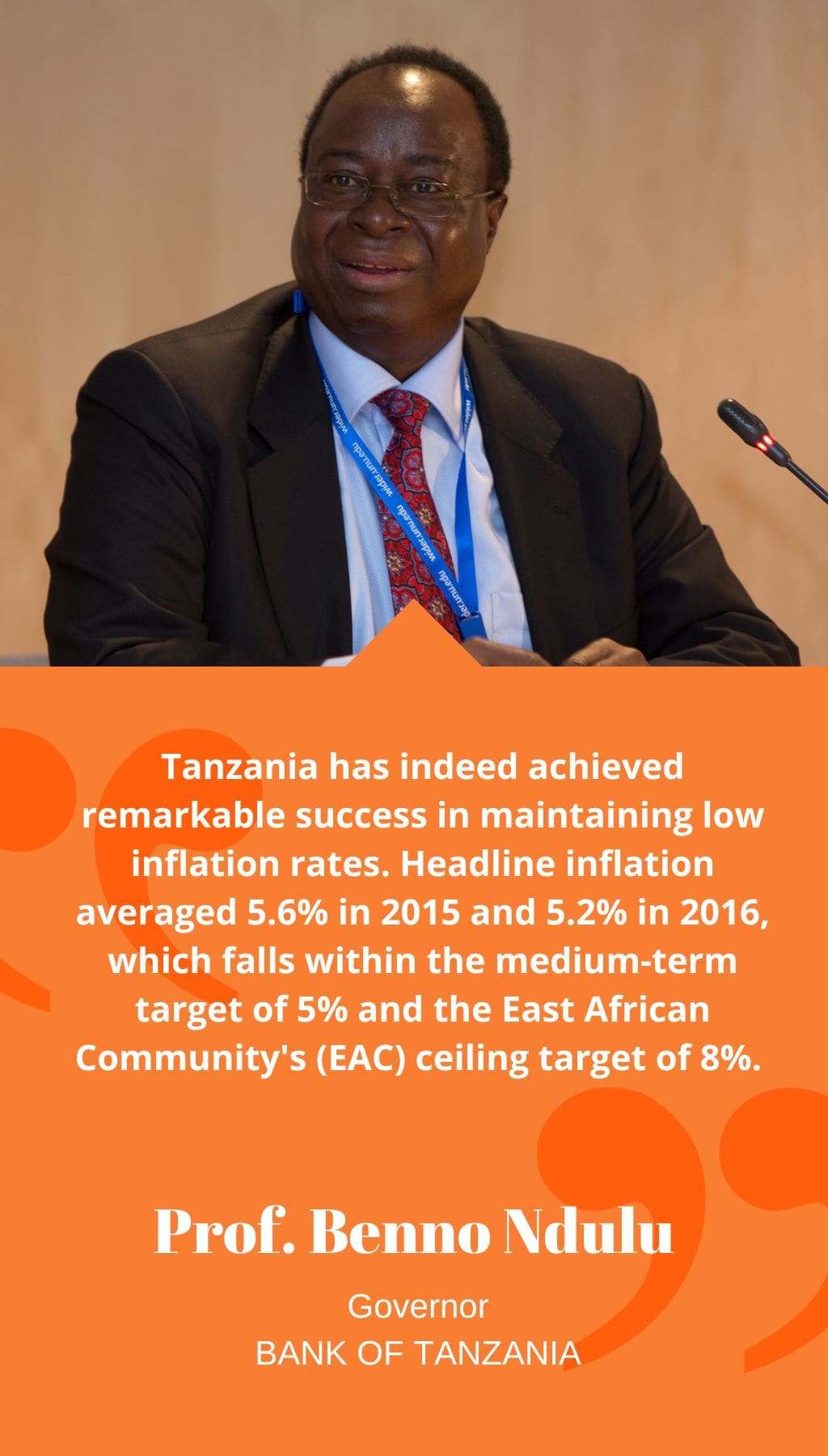
- Tanzania | 19 March 2018

Tanzania has maintained the lowest inflation rate in the East African Region. Could you elaborate on the measures implemented by the Bank of Tanzania (BOT) to achieve this?
Tanzania has indeed achieved remarkable success in maintaining low inflation rates. Headline inflation averaged 5.6% in 2015 and 5.2% in 2016, which falls within the medium-term target of 5% and the East African Community’s (EAC) ceiling target of 8%. In June 2017, Tanzania’s headline inflation reached 5.4%, the lowest in the East African Region. Throughout this period, core inflation remained below 3%. The strong performance can be attributed to excellent macroeconomic policies, the BOT’s tight monetary policy stance, and the stability of the nominal exchange rate against major currencies. These factors were complemented by other prudential measures that ensured the appropriate level of liquidity in the economy. Additionally, improved food supply in the region, subdued global oil prices, and fiscal consolidation contributed to the observed stability.
What are the inflation targets set by the BOT for the coming year?
The BOT forecasts that inflation will remain within single digits and around the medium-term target of 5% in the coming year. This outlook is based on projected favorable food supply conditions, the stability of the Tanzanian shilling exchange rate against major currencies, and subdued global oil prices. The region has experienced improved food supply due to favorable weather conditions, thereby reducing the risk of inflationary pressures. The Bank of Tanzania remains committed to implementing prudent monetary policies to sustain overall macroeconomic stability.
How is the BOT working to boost international commerce and attract foreign direct investment (FDI) to Tanzania?
The BOT has been actively involved in various initiatives aimed at boosting international trade. One notable initiative is the establishment of an export credit guarantee scheme. This scheme provides guarantees to commercial banks for credits extended to exporters. Several projects have already benefited from this scheme, including the Kagera Sugar Company, which secured a loan to expand its production capacity and meet the demand for sugar in both domestic and export markets. In terms of FDI, the BOT collaborates with the National Bureau of Statistics (NBS) and the Tanzania Investment Centre (TIC) to monitor all FDI inflows into the country. This monitoring is conducted through periodic surveys that capture information on the type, magnitude, direction, and composition of FDI. The survey results provide valuable recommendations for investment promotion policies and strategies.
How does the BOT cooperate with the Ministry of Industry, Trade, and Investment to shape policy frameworks in these areas?
The BOT actively collaborates with the Ministry of Industry and Trade in developing and supporting policies aimed at boosting international commerce. To facilitate this cooperation, the bank organizes dissemination workshops involving stakeholders, including the Ministry of Industry, Trade, and Investment. These workshops serve as platforms to share the results and policy recommendations derived from various studies. The insights gathered during these workshops contribute to the formulation of appropriate policies. It is important to note that the implementation of some of these recommendations falls within the jurisdiction of the Ministry of Industry, Trade, and Investment, and the BOT continues to provide support and guidance in shaping these policy frameworks.














